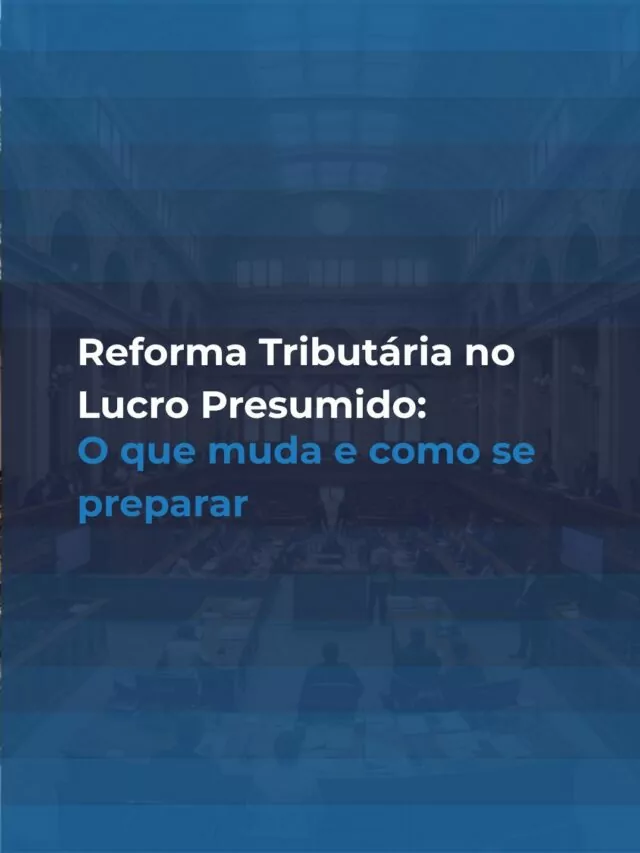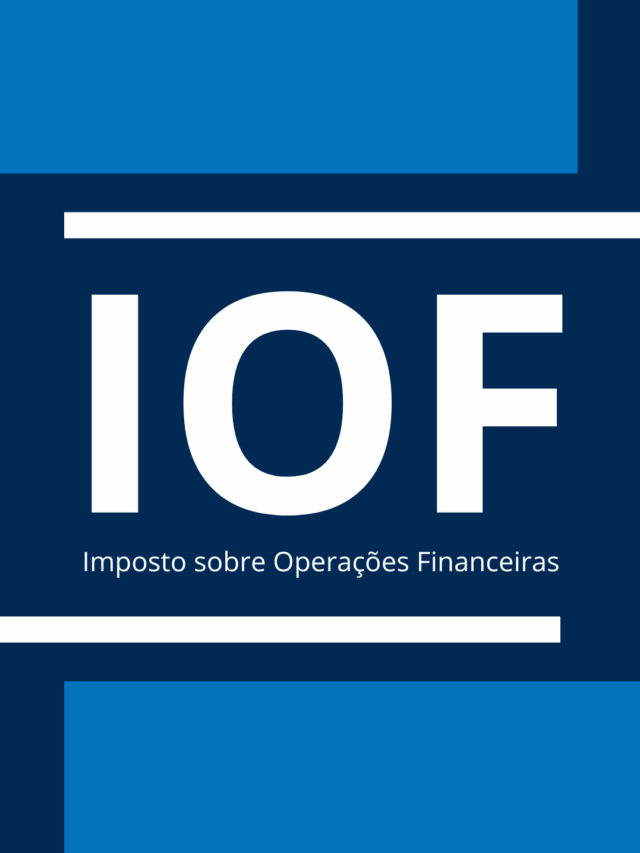Asset succession is a topic that often raises doubts among entrepreneurs, especially when it involves inheritances, donations and family planning. In Brazil, this process is subject to the Causa Mortis and Donation Tax (ITCMD) - known as inheritance tax. Although it is a tax in all states, the rules, rates and procedures vary greatly from one region to another.
Understanding how the ITCMD works is essential for those who want to preserve family assets, reduce tax costs and avoid legal surprises. After all, a good succession strategy can make a significant difference when it comes to transferring assets, whether through death or a gift during life.
In this article, you will understand what is ITCMD, who should pay for it, how it is calculated in states such as São Paulo, Rio de Janeiro, Minas Gerais, Goiás and the Federal District, as well as getting to know smart alternatives such as setting up a family holding company - a tool widely used to optimize the management and transfer of assets in a planned and secure manner.
What is ITCMD (inheritance tax)?
ITCMD stands for Causa Mortis and Donation Tax, This is popularly known as the “inheritance tax”. This is a state tax that is levied when there is a gratuitous transfer of goods or rights, either by inheritance in the event of death, either by living donation.

In other words, whenever someone receives an asset without financial consideration (such as an inherited property or a cash donation), the obligation to pay ITCMD arises.
Because it is a tax of state competence, The rules may vary in each state. This tax is provided for in Federal Constitution of 1988 (art. 155, item I) and also in the National Tax Code (arts. 33 and 35 to 42). Each state implements the ITCMD through specific state laws.
It is important to note that, although it is called “inheritance tax”, it is also is levied on donations during life. For this reason, business owners and anyone who intends to transfer assets, either now or in the future to their heirs, should know how this tax works in order to plan accordingly and avoid surprises.
Who has to pay ITCMD and when?
In general, responsibility for paying the ITCMD lies with whoever receives the good or right. Thus, in the case of an inheritance, each heir or beneficiary must pay the tax on the part they have received; in the case of a donation, the donee (the person who won the donation) is the tax payer.
The tax is levied only once on the transfer of the asset - unlike other annual taxes, the ITCMD is only due on the free transfer.
The time and place of payment varies according to the type of transmission and the legislation of each state, but in general it goes like this:
-
Inheritance (causa mortis): the ITCMD is due in the state where the inventory of the deceased. The taxable event occurs on the date of the opening of the succession (death) and the tax must be paid within the legal deadline for the inventory to be concluded.
-
Donation: ITCMD must be paid to the state where the person resides. donor, if the donor lives in Brazil. If the donor lives abroad and the donee (recipient) lives in Brazil, the tax is generally payable in the state where the donee lives - but the rules can change depending on state legislation. In the case of a donation of real estate, However, there is one exception: the tax falls to the state where the property is located. In all cases of donation, the taxable event occurs on the date the donation takes place (signing of the deed of donation or transfer of the property).
In both cases, in order to transfer the property to the heirs or grantees, proof of payment of the ITCMD is mandatory. Without the paid form, the inventory is not finalized and, in the case of donations, the deed of gift cannot be registered definitively. It is therefore crucial that the entrepreneur or taxpayer declare and collect the tax within the period stipulated by law. In general, payment is made by means of a form (DARE/DAE) issued on the company's website. Treasury Department It must precede the completion of the inventory or registration of the donation.
What are the ITCMD rates in the main states?

One of the main doubts is how much inheritance tax you pay, The answer depends on where the taxpayer is. As mentioned, each state sets its own rate (percentage) of ITCMD, respecting the maximum ceiling set by the Federal Senate, which is currently 8%.
In some states the rate is fixed (single, regardless of the value of the assets transferred), while in others it is progressive, The tax rate is based on the value of the assets transferred, increasing in bands according to the value of the assets transferred - similar to what happens with income tax.
To illustrate, let's look at the current rates (until 2025) in five important states in the Brazilian economic scenario and frequently cited by businesspeople:
-
São Paulo (SP): rate only from 4% on the value of the assets, both for donations and inheritances. (Note: There is discussion about making the rate progressive soon, as we will talk about later).
-
Rio de Janeiro (RJ): rates progressives from 4% to 8%, depending on the total value of the assets inherited or donated. The RJ table has several bands - for example, estates over approximately R$1.7 million are taxed at 8%, while smaller amounts start at 4%.
-
Minas Gerais (MG): rate fixed from 5% for inheritances and donations, applied to the market value of the assets (MG adopted this single rate in its current state law).
-
Goiás (GO): rate progressive from 2% to 8%, depending on the value of the transmission. There are different ranges, starting at 2% for smaller values and going up to 8% in large cases.
-
Federal District (DF): rate progressive 4%, 5% and 6%, According to the value of the assets. In the DF, for example, inheritances up to around R$1.17 million pay 4%; above that up to a certain limit they pay 5%; and values above ~R$2.34 million pay 6%. (There was a proposal to unify at 4%, but so far the progressive bands remain in force).
Note: All Brazilian states charge ITCMD (with some differences in nomenclature - in Rio de Janeiro, for example, the tax is called ITD). No state can exceed 8% currently, as it is the ceiling set by the Senate Resolution 9/1992. However, it is worth noting that recent tax reforms indicate that this scenario could change: there are national discussions about raising the maximum ceiling and standardizing ranges.
Marco Aurélio - Director at CLM Controller and Partner at Diagrama Investimentos.
With Tax reform 2023/2024, As a result, states that currently have a single tax rate (such as São Paulo and Minas Gerais) are expected to adopt progressive bands between 2% and 8%. In other words, in the coming years, inheritances with high values in these states could be taxed at higher percentages than at present. This reinforces the importance of planning, as the cost of succession tends to rise.
For up-to-date information, always consult your state's legislation or the Local tax office. The table above provides a comparative overview, but other states also have their own rates (many already work at the 8% ceiling, such as Bahia, Ceará, Paraná, etc., while some maintain lower percentages).
Are there any exemptions or ways to legally reduce the ITCMD?
Faced with the prospect of paying up to 8% of assets in tax, it is natural to look for ways of reduce or even avoid the ITCMD. First of all, it's important to clarify: avoid completely inheritance tax it's not possible within the law, since both inheritances and donations are taxable events provided for by law. However, there are exemptions, deductions and planning strategies which can minimize the amount owed or legitimately postpone its incidence.
- Legal exemptions: Many states provide for minimum exempt amounts ITCMD, especially for small donations.
- Non-taxed goods and situations: By law, some assets are not included in the ITCMD calculation base.
- Life succession planning: One of the most effective strategies for reducing the impact of ITCMD is to carry out a early succession planning, while the owner of the estate is still alive. This can involve measures such as: planned donations, creation of usufruct, constitution of family holding company, among others, which we will comment on below.
For example living donation of the assets to the heirs can dilute the payment of the tax over time, instead of a single levy on the entire estate. Although the donation itself is subject to ITCMD, it allows the following to be taken advantage of annual exemptions (such as those mentioned above) and transfer values while assets are appreciating less.
A common technique is donation with reservation of usufruct, This is a strategy in which parents give their children the bare ownership of their property, but retain the usufruct (right to use and rent) until their death. This strategy can reduce the calculation base of the tax, because the value of the usufruct is deducted from the valuation of the property. This way, the children already become the future owners (avoiding probate) and the tax is only levied on the portion of the property without the usufruct - which is smaller.
Another planning tip is spread the donations over the years instead of transferring everything at once. In this way, it is possible to take advantage of exempt or lower tax rates for each portion donated, especially in states with progressive taxation. However, you need to be careful not to cheat the law: living donations made shortly before his death can be questioned, as well as being subject to ITCMD. The ideal is to plan well in advance, in a transparent and documented manner.
In a nutshell, legal ways to reduce ITCMD These include: taking advantage of planned exemptions (such as small annual amounts), using non-taxable instruments (such as life insurance), and adopting legal structures that make the succession more efficient. Below, we'll go into detail about one of these structures that has made a name for itself among entrepreneurs - the family holding company - and how it can help in the context of inheritance tax.
How can a family holding company help with succession planning and ITCMD?

A family or property holding is a company created with the aim of concentrating a family's assets into a single legal entity. Instead of each property, shareholding, vehicle or investment remaining in the name of the individual, everything is transferred to the holding company (legal entity). Family members become shareholders in the holding company, in proportion to the assets they hold.
This structure, which is widely used in modern succession planning, has several benefits: facilitates asset management, protects assets against risks and speeds up succession, with potential tax gains.
From an ITCMD point of view, setting up a family holding company can significantly reduce the cost of asset transfer. There are a few reasons for this:
-
Avoids conventional inventory: With the holding company, succession is basically via transfer of quotas of the company. Patriarchs can, during their lifetime, transfer shares in the holding company to their heirs (a process known as donation of shares), which eliminates the need to inventory each asset after death.
-
Lower impact of ITCMD: By making planned donations of holding company shares while you are still alive, you can split the estate for tax purposes. Many families choose to donate a portion of their shares each year within the exemption limit or in the lower ITCMD rate bracket. Thus, over the course of several years, they transfer most of their assets with lower effective tax rates than if everything was taxed at once.
-
Savings on other taxes: Although the focus here is on ITCMD, it is worth noting that the holding company can also generate tax savings on other spheres. For example, rental income or profits from the sale of goods, when received by a legal entity (the holding company), can be taxed at lower tax rates than if they were received by an individual.
-
Easier transition and less conflict: The holding company provides organized transition. Gathering assets under a single umbrella simplifies the division between heirs and avoid fights because everything has already been structured by mutual agreement in life.
In short, the family holding company functions as a tool that “relieves the pocket” and makes the transition of assets easier. It centralizes assets, reduces inheritance taxes (ITCMD) and inventory, cuts red tape and ensures that the family doesn't have to hastily dispose of companies or real estate in order to pay taxes. Of course, setting up a holding company involves set-up costs and annual accounting obligations, but for significant assets the benefits tend to outweigh these costs. Each case must be analyzed individually with the help of professionals (lawyers and accountants), but generally speaking many entrepreneurs consider it advantageous adopt this structure to protect the family legacy.
Frequently Asked Questions (FAQ)
1- What is the maximum amount I can receive from an inheritance or donation without paying ITCMD?
There is no single value valid for the whole country - it depends on the state and the type of transmission.
2 - Who is responsible for paying the ITCMD: the donor or the heir?
The primary responsibility lies with receives the good. In other words heir or legatee must pay the ITCMD on the inheritance he receives, and the donee pays the ITCMD on the donated property they win.
3 - What types of assets are included in the ITCMD tax base?
Practically all goods and rights of economic value are included in the calculation base. This includes real estate, vehicles, money in bank accounts, investments (shares, fund quotas, crypto-assets), stakes in companies (quotas, shares in family businesses), jewelry, works of art, among others.
4 - Does donating during your lifetime help you pay less inheritance tax?
Yes, if well planned, it can help. Lifetime gifting is one of the succession planning strategies to dilute the impact of ITCMD. This is because you can take advantage of exemptions and smaller bands with every donation made.
5 - How is the ITCMD paid and when is it due?
Payment is made via collection form issued by the state tax office.
Conclusion: planning and expert support make the difference
O inheritance tax (ITCMD) is a reality that entrepreneurs and families have to deal with when transferring their assets. Although it represents a relatively low percentage Compared to taxes in other countries, the ITCMD can reach significant amounts - especially for large estates - and, if not taken into account when planning, can create financial and bureaucratic difficulties for successors.
The good news is that, as we've seen, there is room for planning: knowing the laws of each state, using instruments such as gradual donations and family holdings, and taking advantage of exemptions are all measures that enable reducing the tax burden within the law.
A CLM Controller accounting is a consulting and accounting firm with extensive experience in estate and succession planning for entrepreneurs. Among the services offered are setting up family and property holdings, A tailor-made strategy to protect assets and optimize the transfer of assets. With the support of CLM Controller, it is possible to design an efficient succession plan - from analyzing the ITCMD rates in the states where you have assets, to drafting legal instruments (such as usufructs, donations, corporate agreements), to creating and managing a holding company that meets your family's needs.
If you want to educate yourself further about inheritance tax or are already thinking about structuring the succession of your business and personal assets, contact CLM Controller. We'll be happy to help you with a personalized diagnosis and the implementation of the most appropriate strategies - so you guarantee peace of mind for the future, safety for your family and possibly significant savings of time and resources.
After all, succession planning is not just about taxes, but about preserve the legacy built with effort. With the right guidance, you can turn an obligation (paying taxes) into a strategic action for the well-being of everyone involved.










